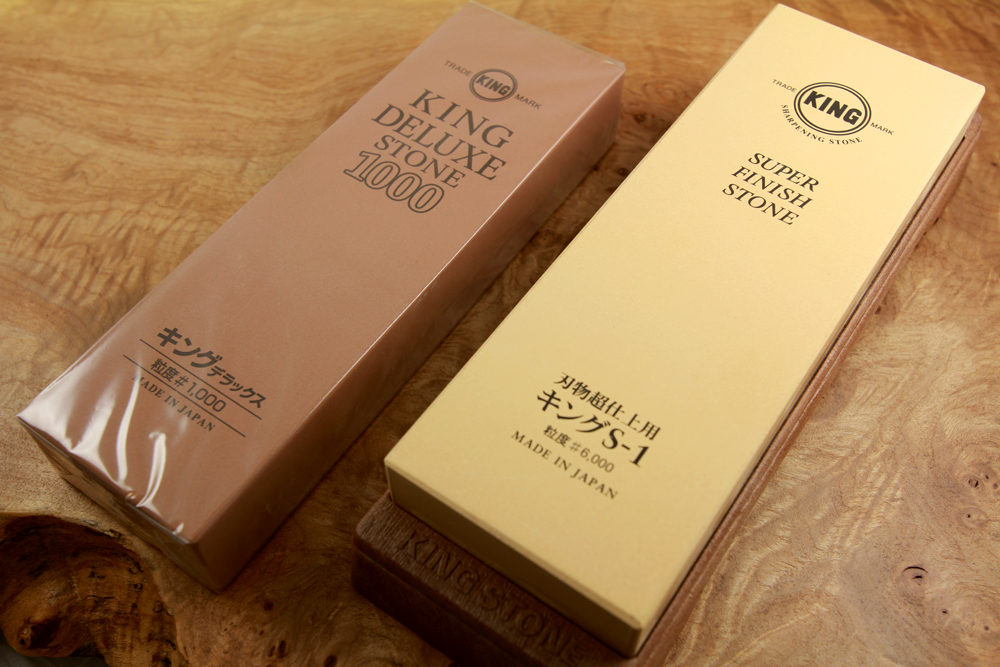
Add a Beston 500 and a Kitayama and youve got something good enough to compete with any kit no matter how expensive. Add a Beston 500 and a Kitayama and youve got something good enough to compete with any kit no matter how expensive.
Never leave Japanese water stones in water for any length of time.
Japanese water stones how to use. Never leave Japanese water stones in water for any length of time. Soak your sharpening stone in water before you use it five minutes is usually enough ten minutes is acceptable for coarse stones. For sharpening rest the stone on a non-slip base or wedge it firmly between two pieces of wood.
As expected Japanese water stones require water before they can be used to sharpen a blade. In most cases the stone should be completely submerged in water for about 5-10 minutes or until it stops making bubbles this means all air pockets have been effectively removed from the water stone. The way in which one cleans up a stone is by simply grinding the damaged layer to reveal a new clean surface.
Traditionally people use full sized stones and match them so they are flat against each other. They slowly but surely grind them down level. This is how I use Japanese wet stones to sharpen my knives.
I talk about a few of the common techniques and how to find the proper blade angle. Use small soft stones finger stones on a soft iron jigane and harder finger stones on a hard steel hagane. If a knife is made of mono-steel or it is a Honyaki knife softer stones might be better.
Do not expose your natural stone to freezing temperatures and do not leave it out to dry on a very cold day or night. A smart-looking Japanese water stone it has a grit rating of 1000. This means it is good for general use for sharpening kitchen knives pocket knives hunting knives penknives craft tools garden tools and scissors.
It will grind away rough. Remove finish stones from water when the sharpening session is done. Never under any circumstance add oil to the waterstones whether directly or in the water used to soak the stones.
To get immediate metal removal when getting ready to sharpen use a small Nagura stone to prepare the polishing stones for use. Bester 1200Takenoko is an awesome combination for the heart of a water stone kit. Add a Beston 500 and a Kitayama and youve got something good enough to compete with any kit no matter how expensive.
If I were choosing an ultimate water stone kit for me it would be just three stones. Gesshin 400 2K and 8K. Soak a natural stone in a water bath for at least 30 minutes before use.
If once you have become familiar with the stone you feel this is not enough try soaking it for up to 24 hours or even longer. The right soaking time serves to stabilize the structure of the stone for consistent results. I show you what to look for in a good Japanese sharpening whetstone.
How to sharpen a knife on a wet stone - how to get an extremely sharp knifeBuy a Wet-Stone. Waterstones are intended to be used wet. So before sharpening soak the stone for 10 to 15 minutes in clean water.
We bathe ours in a drywall-compound tray shown below. You can use any small pan deep enough to submerge the stone in. Japanese water stones with a coarse grit approx.
100 to 400 are perfectly suitable for sharpening knives that are extremely dull. The coarse grit helps you to get the knives back to their correct shape V-shape. Water stones become concave with use and require periodic flattening.
Our flattening stones will do this job. A flat stone is indispensable for effective sharpening especially of flat chisel and plane blades. All grit grade specifications refer to the Japanese JIS norm.
In this video learn how to flatten and maintain Japanese waterstones using 150 grit sandpaper and a flat-milled machinists reference granite. Craig also suggests a useful collection of grits and styles of stones for maximum efficiency and value. And he discusses how natural Japanese quarried stones.
For normal sharpening stones from 700 to 2000 grit are used. We recommend stones from 700 to 1200 grit. To take off the fine scratches and burrs left by coarser stones and to polish the surface you can use stones starting at around 2000 grit.
